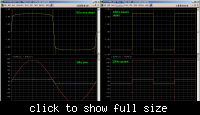boylesg
Advanced Member level 4
- Joined
- Jul 15, 2012
- Messages
- 1,023
- Helped
- 5
- Reputation
- 10
- Reaction score
- 6
- Trophy points
- 1,318
- Location
- Epping, Victoria, Australia
- Activity points
- 11,697
Nicely explained Jason - thanks.
So essentially any voltage value on the negative opamp input less than what is on the positive opamp input and the opamp acts as an amplifier.
And as far as I can gather they do this by converting some of negative voltage supply to positive voltage and adding it to the output.
So essentially any voltage value on the negative opamp input less than what is on the positive opamp input and the opamp acts as an amplifier.
And as far as I can gather they do this by converting some of negative voltage supply to positive voltage and adding it to the output.


